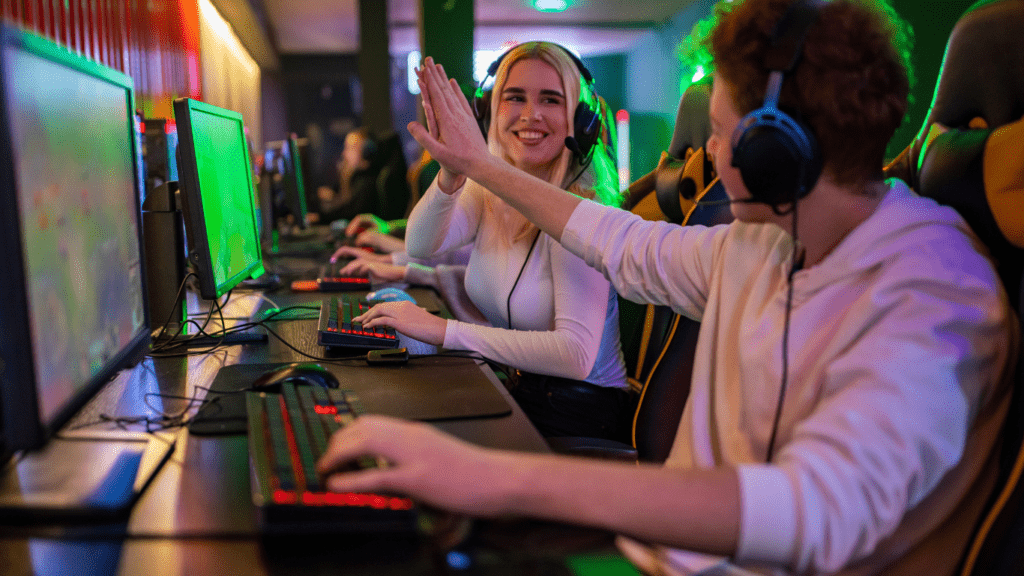Esports isn’t just about raw skill anymore—it’s a constantly shifting battlefield where the meta dictates who rises and who falls. Every patch, update, or newly discovered strategy can flip the script, forcing players to rethink their approach overnight. Staying ahead in this dynamic environment means more than just keeping up; it’s about anticipating change and evolving faster than your competition.
Understanding Esports Meta Evolution
Esports meta represents the dominant strategies, techniques, and character choices that define competitive success at a given time. This meta evolves with game updates, balance changes, and emerging player strategies. Recognizing these shifts is crucial for maintaining competitiveness.
Game developers frequently tweak mechanics, adjust character abilities, and introduce new elements. These updates often disrupt established norms, creating a fluid meta landscape. For example, when Overwatch introduced Sigma, the tank meta shifted to favor double-barrier compositions, requiring players to rethink team dynamics and individual roles.
Players and teams consistently innovate, finding efficient strategies to maximize win rates. Once a strategy becomes widespread, counter-strategies emerge, leading to a cyclical evolution. For instance, the introduction of split-push tactics in League of Legends forced teams to adapt with improved map control and vision strategies.
Analyzing patch notes, watching professional matches, and engaging in discussions within the community provide valuable insights into meta trends. Identifying patterns early helps players refine their playstyles and gain an edge over slower adapters.
The Role Of Meta In Esports
The meta in esports defines the prevailing strategies, tactics, and character choices that dominate competitive environments. Its impact extends to:
- individual performance
- team dynamics,
- overall game balance
making it a crucial factor in maintaining a competitive edge.
How Meta Shapes Competitive Play
Meta influences decisions at every level, from character selection to in-game tactics. Players optimize their approach by leveraging the strengths of dominant strategies while countering commonly used techniques. For instance, team compositions often revolve around characters or abilities deemed strongest by the community or statistics.
This dynamic encourages adaptability. When a meta shifts, players must adjust their playstyles to avoid falling behind. Professional teams regularly analyze trends, study opponents’ strategies, and experiment with unorthodox setups to combat predictable approaches. This cycle ensures that the competitive scene evolves, remaining fresh and challenging.
Examples Of Meta Shifts In Popular Esports Titles
- Meta shifts in esports titles like League of Legends (LoL), Counter-Strike: Global Offensive (CS:GO), and Overwatch are common after patches or updates. In LoL, changes to champion stats and item mechanics frequently alter the viability of champions. For example, the dominance of “Enchanter” supports transitioned to “Engage” tank supports with a single impactful patch.
- In CS:GO, weapon balance changes have influenced how teams approach the economy, with buffs or nerfs to guns like the SG 553 or AUG. Teams adjusted their strategies, favoring precision weapons or budget buys depending on the meta.
- Overwatch experienced a meta-defining shift during the “GOATS” era, where teams optimized tank-heavy compositions for team fights. Blizzard’s introduction of role queue forced meta adaptation, redefining team compositions to fit new constraints.
These examples highlight how meta shifts can make or break strategies, confirming that staying updated on trends is vital for success in competitive play.
Adapting Your Playstyle To Changing Meta

Adapting to the shifting meta is crucial for maintaining a competitive edge in esports. Staying ahead requires awareness of emerging strategies and the ability to adjust quickly.
Identifying Emerging Trends
I prioritize monitoring patch notes, professional matches, and top players’ gameplay to identify new trends. Patch updates frequently adjust game mechanics, introducing buffs, nerfs, or new features that redefine optimal strategies. Watching how professional players respond to these changes offers valuable insights into which tactics are becoming dominant.
Tracking win rates, pick rates, and ban rates can reveal underlying patterns in meta shifts. For example, a sudden increase in a specific champion’s pick rate in League of Legends or higher usage of a weapon in CS:GO often signals a strategic shift. Engaging with online communities, forums, or social media discussions also helps me stay informed about trending strategies before they become mainstream.
Emphasizing Flexibility And Versatility
I cultivate flexibility by:
- mastering multiple roles
- characters
- strategies
Specializing in one area can be effective short-term, but diversifying skills ensures adaptability when the meta changes. For instance, if support champions become crucial in League of Legends, being proficient in that role allows me to remain relevant.
I experiment with various playstyles during casual games to broaden my comfort zone. This practice helps me quickly adjust to meta changes, whether it involves aggressive tactics in Overwatch or defensive setups in Valorant. Building team synergy through versatile compositions also reduces reliance on rigid strategies, enabling adaptability against evolving counter-strategies.
Balancing Personal Style With Meta Expectations
Aligning personal playstyle with the current meta ensures consistent performance in evolving competitive environments. Striking this balance requires leveraging individual strengths while remaining adaptable.
Leveraging Your Strengths
Recognizing my unique skills helps me maximize performance within any meta. By identifying what I excel at—such as precise aim in FPS games like Counter-Strike: Global Offensive or calculated decision-making in MOBA titles like League of Legends—I focus on strategies that complement these strengths. Adapting these traits to fit the dominant meta amplifies their impact.
For instance, if the meta in CS:GO favors rifles, I prioritize refining my rifle mechanics without abandoning practiced skills with secondary weapons. Similarly, if in LoL the meta emphasizes utility-based champions and I excel in support play, I select picks that align with both my comfort zone and the current trends. This targeted approach ensures I stay relevant without compromising my capabilities.
Avoiding Over-Reliance On Meta Strategies
Trusting the meta exclusively limits versatility and potential growth. While studying dominant strategies is essential, I avoid copying them without understanding their core principles. Blindly adhering to popular choices often creates predictability, making counterplay easier for opponents.
To counter this, I diversify my skills by practicing outside-the-box tactics during non-competitive matches. Experimenting with unconventional playstyles, like using underutilized heroes in Overwatch or mastering off-meta weapons in FPS titles, strengthens adaptability. These experiments reveal situational advantages that I can deploy against predictable opponents reliant on meta trends. This way, I maintain an edge even when the meta shifts unexpectedly.





